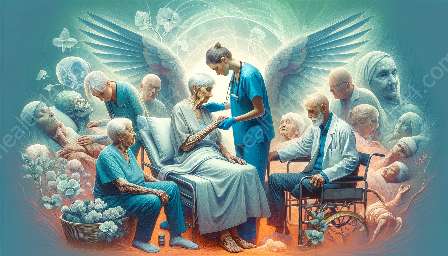Gait training is a critical component of geriatric rehabilitation, supporting older adults in maintaining mobility and independence. In this topic cluster, we will explore the significance of gait training in geriatric rehabilitation, its benefits for older adults, and its compatibility with geriatrics. We will delve into the different techniques and exercises involved in gait training for geriatric rehabilitation, emphasizing the real-world impact and effectiveness of such interventions.
The Importance of Gait Training in Geriatric Rehabilitation
Gait, the manner of walking, plays a pivotal role in an individual's ability to perform daily activities and maintain functional independence. In geriatric rehabilitation, gait training aims to address impairments or changes in gait patterns that older adults may experience due to aging, injury, or medical conditions.
Furthermore, gait training in the context of geriatric rehabilitation encompasses a comprehensive approach to improving mobility, balance, and overall physical function in older adults. It not only aims to address existing gait abnormalities but also seeks to prevent future mobility-related issues, thereby promoting a higher quality of life for older individuals.
Benefits of Gait Training for Older Adults
The benefits of gait training for older adults in geriatric rehabilitation are extensive and diverse. By actively engaging in gait training interventions, older adults can experience improved balance, reduced fall risk, enhanced mobility, and increased confidence in performing daily activities. Additionally, gait training contributes to the maintenance of muscle strength and endurance, which are essential for functional independence and overall well-being in the geriatric population.
Moreover, gait training interventions have been shown to have positive effects on cognitive function and mental well-being in older adults. As physical activity, including gait training, is closely linked to cognitive health, engaging in purposeful gait training activities can yield cognitive benefits and contribute to preserving neurological function in the geriatric population.
Understanding Geriatrics and Its Compatibility with Gait Training
Geriatrics, the branch of medicine that focuses on the healthcare of older adults, emphasizes the importance of addressing the unique needs and challenges faced by aging individuals. Gait training aligns seamlessly with the principles of geriatrics, as it directly addresses one of the key factors impacting the functional abilities and overall well-being of older adults—mobility.
Given the emphasis on preserving independence and optimizing the quality of life for older adults, gait training holds particular relevance within the field of geriatric rehabilitation. By promoting safe and effective mobility, gait training interventions contribute to the overarching goals of geriatric care, ultimately improving the physical, emotional, and social aspects of aging.
Techniques and Exercises in Gait Training for Geriatric Rehabilitation
There are diverse techniques and exercises utilized in gait training for geriatric rehabilitation, tailored to address the specific needs and abilities of older adults. These interventions often encompass a combination of mobility exercises, balance training, gait re-education, and functional activities designed to enhance gait patterns and overall mobility.
Common gait training exercises for geriatric rehabilitation may include walking drills, strengthening exercises for lower extremities, proprioceptive training, and task-specific activities that simulate real-life movements. Additionally, assistive devices such as canes, walkers, and orthotics may be integrated into gait training programs to support older adults in achieving safe and efficient mobility.
Real-World Impact and Effectiveness of Gait Training in Geriatric Rehabilitation
The real-world impact of gait training in geriatric rehabilitation is profound, significantly influencing the daily lives and functional abilities of older adults. By actively engaging in gait training interventions, older individuals can experience improvements in gait speed, endurance, and overall mobility, contributing to a higher level of independence and confidence in performing daily activities.
Furthermore, the effectiveness of gait training in geriatric rehabilitation is underscored by its potential to reduce the risk of falls and fall-related injuries, which are prevalent concerns in the aging population. Through targeted gait training programs, older adults can enhance their balance, stability, and gait control, mitigating the risk of falls and promoting a safer environment for aging individuals.
In conclusion, gait training plays an integral role in geriatric rehabilitation, addressing the mobility and functional needs of older adults while aligning with the underlying principles of geriatrics. By emphasizing the importance of gait training, its benefits for older adults, and the specific techniques and exercises involved, this topic cluster provides valuable insights into the essential role of gait training in promoting mobility, independence, and overall well-being in the geriatric population.


